 "ttyymmnn" (ttyymmnn)
"ttyymmnn" (ttyymmnn)
08/26/2016 at 12:35 • Filed to: planelopnik, planelopnik history
 8
8
 12
12
 "ttyymmnn" (ttyymmnn)
"ttyymmnn" (ttyymmnn)
08/26/2016 at 12:35 • Filed to: planelopnik, planelopnik history |  8 8
|  12 12 |
Welcome to This Date in Aviation History , getting of you caught up on milestones, important historical events and people in aviation from August 24 through August 26.
!!! UNKNOWN CONTENT TYPE !!!
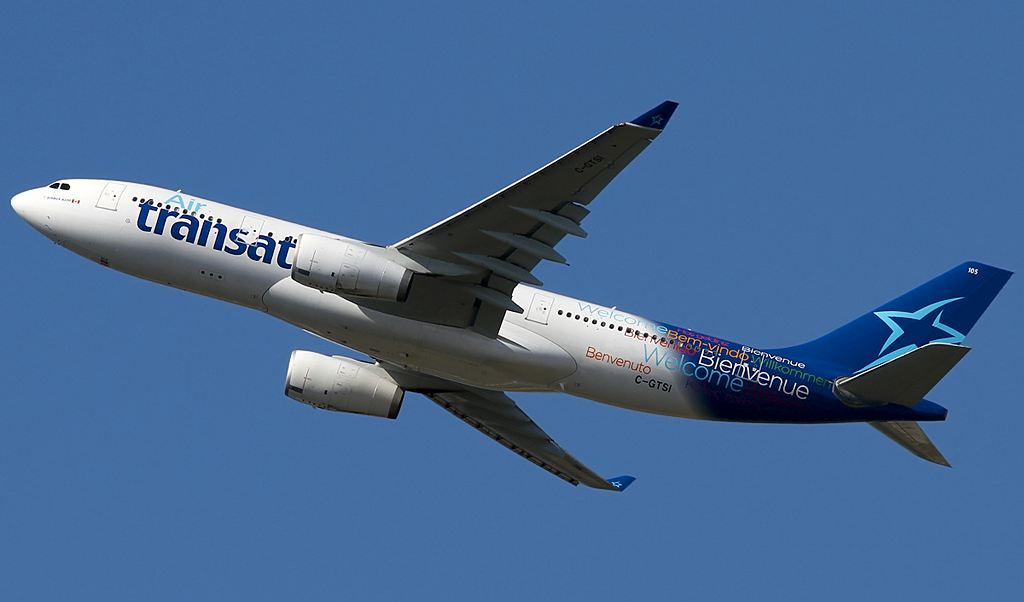
August 24, 2001 – Air Transat Flight 236 runs out of fuel over the Atlantic Ocean and glides to a landing in the Azores. Flying across the open ocean has always been a risky proposition. Should an emergency arise, it’s likely that the aircraft is too far away from a safe landing spot and, for that reason, transoceanic flying boats plied the long overwater routes. For many years, transoceanic flights were restricted to airliners with more than two engines, until new regulations, known as !!!error: Indecipherable SUB-paragraph formatting!!! , recognized the safety of modern jet engines. But even an engine that is reliable enough for flights between continents requires fuel to run. Rigorous calculations help prevent an aircraft from running out of fuel, and also include extra fuel to allow for holding patterns and diversions to different airfields. But if those calculations are done incorrectly, an airliner can become starved of fuel and turn into a giant glider, as happened in 1983 to an Air Canada flight known as the !!!error: Indecipherable SUB-paragraph formatting!!! . In that famous case, crews simply didn’t put a sufficient amount of fuel onboard the airliner. But undetected mechanical faults can also lead to fuel starvation, and the middle of the Atlantic Ocean is a terrible place see your fuel gauge reading empty. Air Transat Flight 236 was an !!!error: Indecipherable SUB-paragraph formatting!!! (C-GITS) flying from Toronto, Canada to Lisbon, Portugal. The flight, carrying 293 passengers and 13 crew, took off without incident, but a little more than 4 hours into the flight, the flight deck crew received a warning for low oil temperature and high oil pressure in the Number 2 !!!error: Indecipherable SUB-paragraph formatting!!! engine. Twenty minutes later, they received a warning for fuel imbalance, and the they responded by transferring fuel from the left wing tank to the right wing tank, which was nearly empty. What the crew did not know was that a fuel leak had caused the imbalance, and the fuel transfer caused the remaining fuel to flow through the leaking fuel line and drain out at roughly one gallon per second. The pilots declared a fuel emergency and decided to divert to Lajes Air Base in the !!!error: Indecipherable SUB-paragraph formatting!!! , which lies 850 miles west of Portugal. Within ten minutes, and still far from Lajes, both engines flamed out, and the Airbus lost all primary electrical power, as well as its main hydraulic power. The captain of the flight, !!!error: Indecipherable SUB-paragraph formatting!!! , an experienced glider pilot, put all his gliding skills to use as he and First Officer Dirk de Jager worked to control the powerless plane with minimal controls. Their skill kept the plane in the air for 19 minutes, covering roughly 75 miles, the longest distance ever flown by an unpowered passenger jet. Military air traffic controllers at Lajes guided the plane to the runway, and the plane touched down at a speed of 200 knots, resulting in a fire in the braking system that caused the loss of all 8 main wheels.
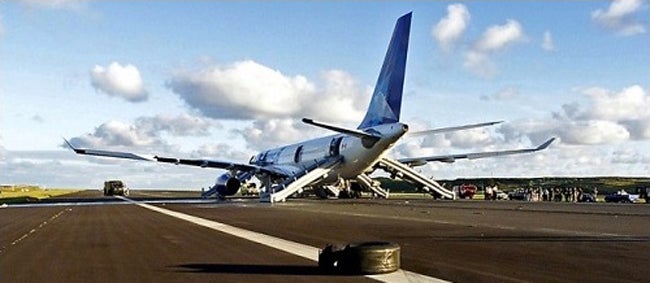
Fourteen passengers and two crew members received minor injuries during the evacuation, and two passengers were seriously hurt. The plane experienced damage to the landing gear and lower fuselage. Investigators traced the cause of the leak in the No. 2 engine to an incorrect part being installed in the hydraulics system by Air Transat maintenance staff, and though pilot error was also listed for the crew’s failure to identify the fuel leak, Captain Piché was awarded the
!!!error: Indecipherable SUB-paragraph formatting!!!
by the Air Line Pilots’ Association. The French aeronautics board also issued a directive leading to a revision in the flight manual to prevent future incidents.
(Photo—not accident aircraft—by Konstantin von Wedelstaedt via
!!!error: Indecipherable SUB-paragraph formatting!!!
; second photo author unknown)
!!! UNKNOWN CONTENT TYPE !!!
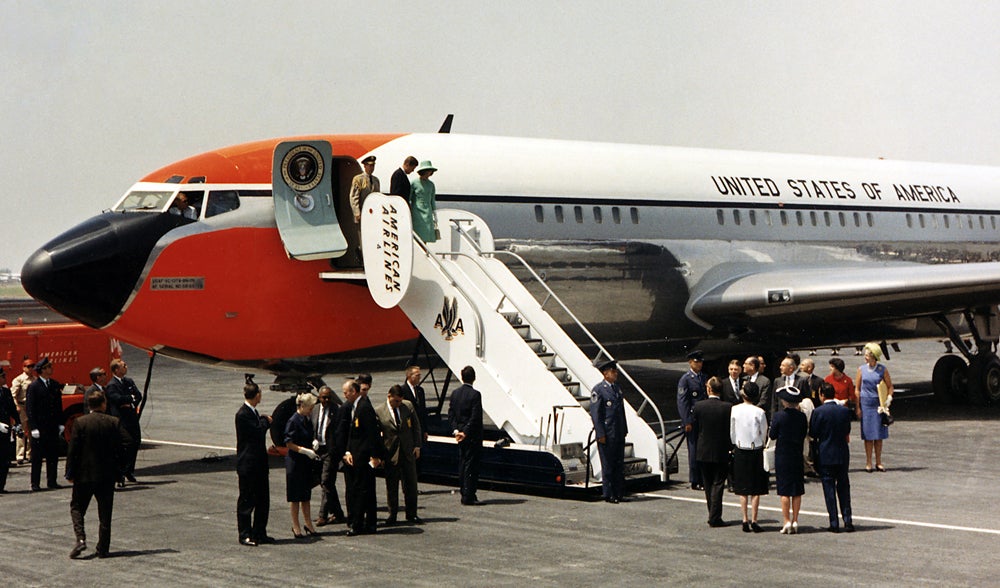
August 26, 1959 – The first VC-137 enters service. In 1943, President !!!error: Indecipherable SUB-paragraph formatting!!! became the first US President to travel on an airplane for official government business when he flew from the US to Casablanca on the Moroccan coast for a war strategy meeting with British Prime Minister !!!error: Indecipherable SUB-paragraph formatting!!! . President Roosevelt made the trip in a !!!error: Indecipherable SUB-paragraph formatting!!! flying boat named the Yankee Clipper . Presidents have been flying around the world ever since, but it wasn’t until 1959 that the White House entered the jet age with the arrival of the VC-137, a modified !!!error: Indecipherable SUB-paragraph formatting!!! airliner. The story goes that Secretary of State !!!error: Indecipherable SUB-paragraph formatting!!! was dismayed by the visuals of the President of the United States arriving for a summit with the Russian president in a propeller-driven !!!error: Indecipherable SUB-paragraph formatting!!! while his Russian counterpart arrived on a jet. In an era of Cold War competition, such one-upmanship could not be allowed. So Dulles (the man for whom the international airport in Washington, DC is named) pressed the Air Force to upgrade the President’s plane to something more modern—and more impressive. Near the end of Eisenhower’s term, the Air Force ordered three 707s for VIP travel, the first being designated Special Air Mission (SAM) 970, and the others SAM 971 and SAM 972. The new aircraft featured living and working spaces for the president and his staff, as well as modern communications equipment. President Eisenhower was the first US President to fly in the new airliner, visiting 11 Asian nations during his “Flight to Peace” goodwill tour in 1959. But the SAM jets used by Eisenhower, and briefly by his successor, !!!error: Indecipherable SUB-paragraph formatting!!! , looked nothing like the iconic blue and white jets we see today. The original 707s featured a rather gaudy, bright orange nose and bright orange tail stripe. It wasn’t until the next generation of !!!error: Indecipherable SUB-paragraph formatting!!! purchased for President Kennedy were decked out in the famous livery designed by !!!error: Indecipherable SUB-paragraph formatting!!! . SAM 970 served Presidents Eisenhower, Kennedy and !!!error: Indecipherable SUB-paragraph formatting!!! , and after the original SAM 970 was replaced in 1962 by the newer VC-137C, it continued flying VIPs and the Vice President until 1996, with its last executive passenger being Vice President !!!error: Indecipherable SUB-paragraph formatting!!! . SAM 970 is preserved and is now on display at the !!!error: Indecipherable SUB-paragraph formatting!!! in Seattle, Washington. (Photo author unknown)
!!! UNKNOWN CONTENT TYPE !!!
Short Takeoff
!!! UNKNOWN CONTENT TYPE !!!
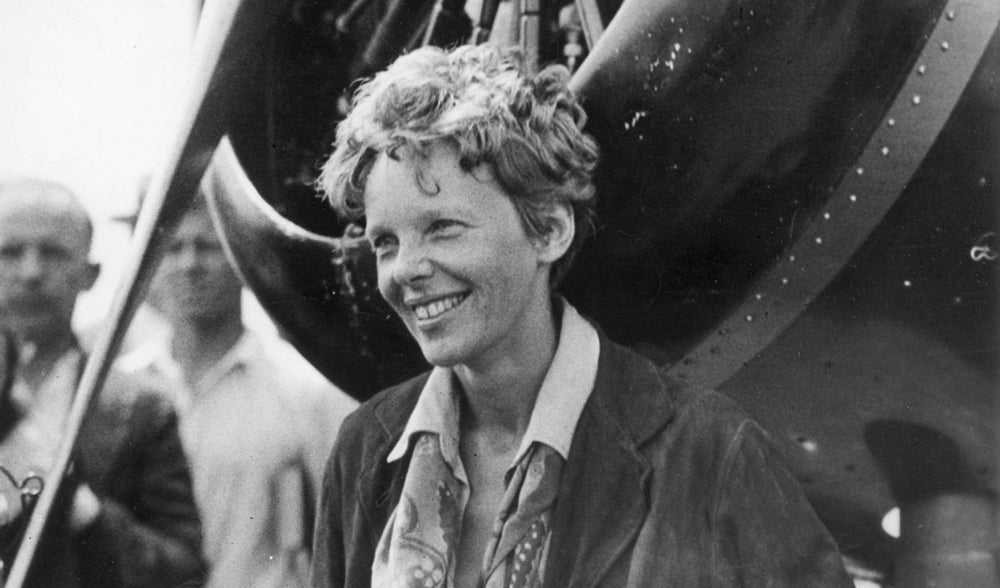
August 24, 1932 – Amelia Earhart becomes the first woman to fly nonstop across the United States.
Amelia Earhart is America’s best known aviatrix, and she set many flying records for her day and achieved many firsts for female pilots. Perhaps her greatest feat was her solo flight across the Atlantic Ocean on May 20-21, 1932, but she followed that just three months later with another first, becoming the the first woman to fly nonstop across the United States. In doing so, she also set a new transcontinental speed record in her
!!!error: Indecipherable SUB-paragraph formatting!!!
, completing the 2,448 mile journey in 19 hours 5 minutes, a record she would break the following year. Earhart, along with navigator Fred Noonan, disappeared on July 2, 1937 while attempting to fly around the world.
(Photo via
!!!error: Indecipherable SUB-paragraph formatting!!!
)
!!! UNKNOWN CONTENT TYPE !!!

August 25, 2012 – The death of Neil Armstrong,
an aerospace engineer, combat pilot, test pilot, astronaut, and the first man to set foot on the Moon. Armstrong was born on August 5, 1930 in Wapakoneta, Ohio and, after serving as a fighter pilot in Korea, he received a degree in engineering from Purdue University. Following a stint as a test pilot, Armstrong joined the
!!!error: Indecipherable SUB-paragraph formatting!!!
in 1962 and became the first American civilian to fly in space when he served as command pilot for
!!!error: Indecipherable SUB-paragraph formatting!!!
. His second and final spaceflight took place in July 1969 when he commanded
!!!error: Indecipherable SUB-paragraph formatting!!!
, becoming the first man to walk on the Moon. Armstrong retired from NASA following that flight, and became a college professor and businessman before his death at age 82.
(NASA photo)
!!! UNKNOWN CONTENT TYPE !!!
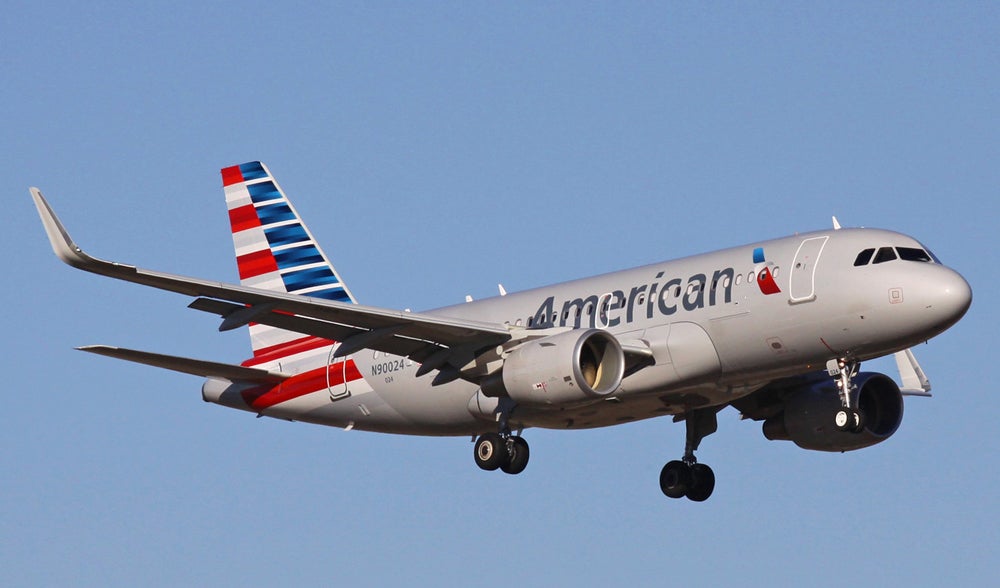
August 25, 1995 – The first flight of the Airbus A319,
a narrow-body, short-to-medium-range airliner that was developed from the
!!!error: Indecipherable SUB-paragraph formatting!!!
. The A319, a shorter version of the A320, was developed based on a request by
!!!error: Indecipherable SUB-paragraph formatting!!!
of
!!!error: Indecipherable SUB-paragraph formatting!!!
(IFLC), and was intended to provide a direct competitor to the
!!!error: Indecipherable SUB-paragraph formatting!!!
. Though it carries slightly fewer passengers than the A320, it has the same fuel capacity, thus the range is extended up to 3,700 nautical miles with the addition
!!!error: Indecipherable SUB-paragraph formatting!!!
(called
Sharklets
by Airbus). Just under 1,500 A319s have been produced, and it is in service with over 100 operators worldwide.
(Photo by the author)
!!! UNKNOWN CONTENT TYPE !!!
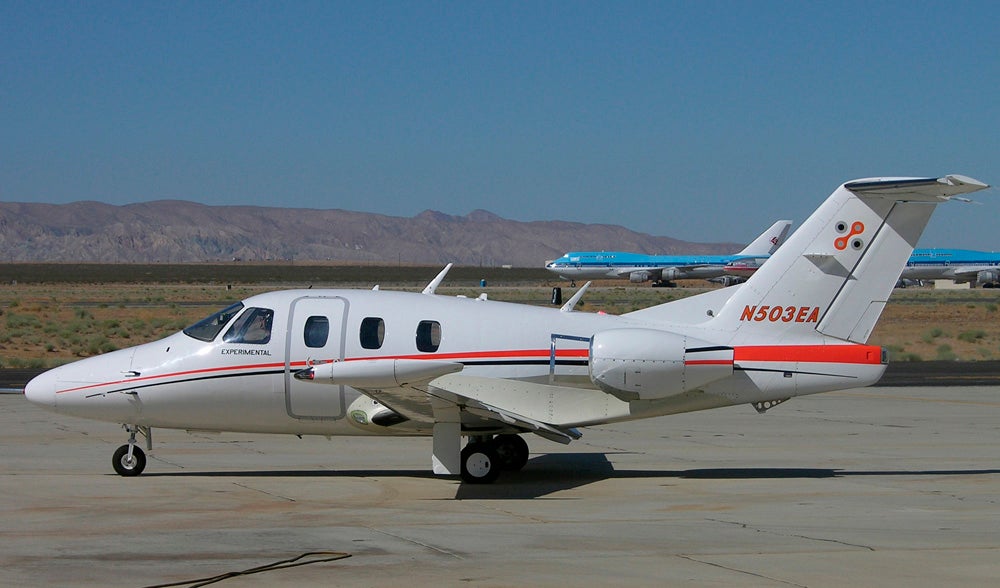
August 26, 2002 – The first flight of the Eclipse 500,
a small, six-seat business jet and the first in a new class of
!!!error: Indecipherable SUB-paragraph formatting!!!
(VLJ). Previously called microjets, VLJs are approved for single-pilot operation and seat 4-8 passengers with a maximum take-off weight (MTOW) of under 10,000 pounds. The Eclipse 500 is based on the
!!!error: Indecipherable SUB-paragraph formatting!!!
which was designed by
!!!error: Indecipherable SUB-paragraph formatting!!!
, and is powered by a pair of
!!!error: Indecipherable SUB-paragraph formatting!!!
turbofans that give it a maximum speed of 425 mph and a range of nearly 1,300 miles.
!!!error: Indecipherable SUB-paragraph formatting!!!
entered bankruptcy in 2008 due to a lack of funding, and production stopped at 560 aircraft. After liquidation,
!!!error: Indecipherable SUB-paragraph formatting!!!
took over, and development of a more advanced
!!!error: Indecipherable SUB-paragraph formatting!!!
is underway.
(Photo by Alan Radecki via
!!!error: Indecipherable SUB-paragraph formatting!!!
)
!!! UNKNOWN CONTENT TYPE !!!
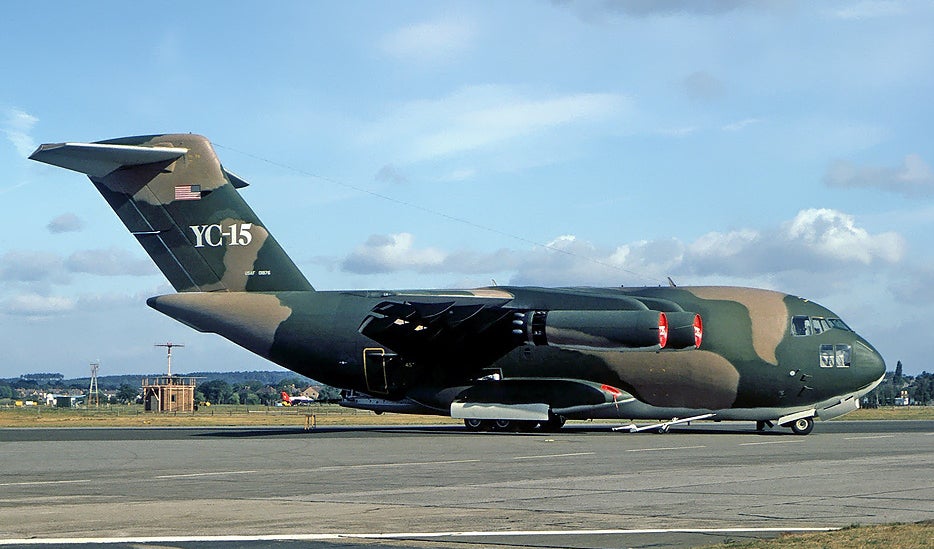
August 26, 1975 – The first flight of the McDonnell Douglas YC-15, an unsuccessful entrant into the US Air Force competition of procure a jet-powered replacement for the !!!error: Indecipherable SUB-paragraph formatting!!! . McDonnell Douglas competed against the !!!error: Indecipherable SUB-paragraph formatting!!! for the Air Force contract, but neither aircraft was selected. The YC-15 featured advances such as a !!!error: Indecipherable SUB-paragraph formatting!!! to reduce drag and increase lift, along with !!!error: Indecipherable SUB-paragraph formatting!!! to improve low-speed performance. Only 2 YC-15 prototypes were built and, while it failed to enter production, many elements of its design served as the basis for the !!!error: Indecipherable SUB-paragraph formatting!!! following McDonnell Douglas’ merger with Boeing in 1997. (Photo by Steve Fitzgerald via !!!error: Indecipherable SUB-paragraph formatting!!! )
!!! UNKNOWN CONTENT TYPE !!!
Recent Aviation History Posts
!!! UNKNOWN CONTENT TYPE !!!
!!! UNKNOWN CONTENT TYPE !!!
!!! UNKNOWN CONTENT TYPE !!!
!!! UNKNOWN CONTENT TYPE !!!
!!! UNKNOWN CONTENT TYPE !!!
If you enjoy these Aviation History posts, please let me know in the comments. And if you missed any of the past articles, you can find them all at
!!!error: Indecipherable SUB-paragraph formatting!!!
.
!!! UNKNOWN CONTENT TYPE !!!
 CB
> ttyymmnn
CB
> ttyymmnn
08/26/2016 at 12:51 |
|
I’ll always be impressed by that Air Transat flight. And it’s amusing that both “airliner running out of fuel” stories started their flights in Canada.
 user314
> ttyymmnn
user314
> ttyymmnn
08/26/2016 at 12:52 |
|
The YC-15 does look like a Choro-Q version of the C-17, at least from that angle.
 ttyymmnn
> user314
ttyymmnn
> user314
08/26/2016 at 12:57 |
|
I hadn't thought of the similarity with the toy, but you are spot on. I didn't do it, but it would be interesting to compare the size difference between the YC-15 and the C-17. The former does indeed look like a mini version of the latter.
 ttyymmnn
> CB
ttyymmnn
> CB
08/26/2016 at 12:57 |
|
Clearly, it's a Canadian conspiracy.
 ttyymmnn
> CB
ttyymmnn
> CB
08/26/2016 at 12:59 |
|
Also, imagine what it would have been like to be a passenger on a silent airliner over the Atlantic Ocean.
 CB
> ttyymmnn
CB
> ttyymmnn
08/26/2016 at 13:00 |
|
Probably to get people to visit Gimli. Lovely town, by the way.
 ttyymmnn
> CB
ttyymmnn
> CB
08/26/2016 at 13:02 |
|
Also the name of a dwarf. Coincidence? I think not.
 user314
> ttyymmnn
user314
> ttyymmnn
08/26/2016 at 16:25 |
|
I couldn’t find an overlay image of the two, but from the top they’re not as similar; more like looking at a great uncle than a father.
Looking at the numbers, the C-15 isn’t as small as it appears:
Length: 124 ft 3 in (37.9 m)
Wingspan : 110 ft 4 in/132 ft 7 in (33.6 m/40.4 m)
Height: 43 ft 4 in (13.2 m)
Wing area: 1,740 ft² (162 m²)
Empty weight : 105,000 lb (47,600 kg)
VS. C-17
Length: 174 ft (53 m)
Wingspan : 169.8 ft (51.75 m)
Height: 55.1 ft (16.8 m)
Wing area: 3,800 ft² (353 m²)
Empty weight : 282,500 lb (128,100 kg)
 ttyymmnn
> user314
ttyymmnn
> user314
08/26/2016 at 16:57 |
|
Interesting illustration. It’s important to remember, though, that the YC-15 was conceived as a replacement for the C-130, a smaller tactical airlifter, and you can see that the two share a similar wing for STOL performance. The C-17 is a much larger strategic airlifter.
 The Powershift in Steve's '12 Ford Focus killed it's TCM (under warranty!)
> ttyymmnn
The Powershift in Steve's '12 Ford Focus killed it's TCM (under warranty!)
> ttyymmnn
08/31/2016 at 08:40 |
|
My first job out of college was with the company that made the Eclipse 500s avionics...well, the second company, since the first company screwed up dramatically. When I was there, a major project was getting the upgraded system for the 550 ready.
I recently read that the new 550s will come with a Garmin system standard, with the old system available for special order. That had to be an unpleasant announcement.
 ttyymmnn
> The Powershift in Steve's '12 Ford Focus killed it's TCM (under warranty!)
ttyymmnn
> The Powershift in Steve's '12 Ford Focus killed it's TCM (under warranty!)
08/31/2016 at 09:01 |
|
I'm guessing they won't sell to many old systems.
 The Powershift in Steve's '12 Ford Focus killed it's TCM (under warranty!)
> ttyymmnn
The Powershift in Steve's '12 Ford Focus killed it's TCM (under warranty!)
> ttyymmnn
08/31/2016 at 09:12 |
|
I doubt it. The old system had a lot of functionality, and had powerful enough processors that it worked quickly (in my limited experience - I wasn’t on the software end), but it was different.
Garmin owns the consumer private aircraft market. They have the best thought out, best supported systems out there, and it is found in a variety of consumer-grade aircraft. The Garmin system going in the new 550 is the same one commonly found on prop and turboprop aircraft that many Eclipse owners are upgrading from, so the transition will be a lot easier.